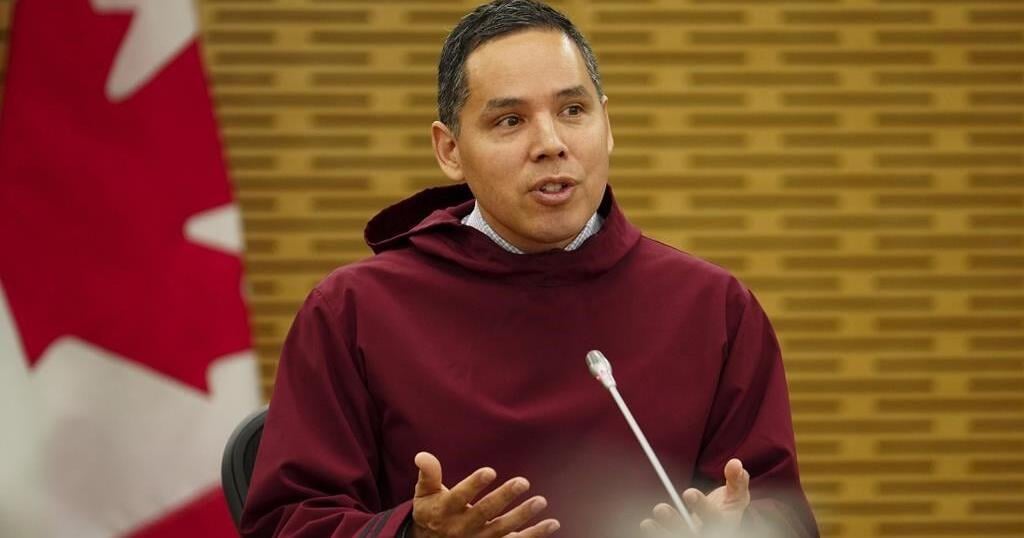As millions in federal funding flow into a Labrador group whose claims of Inuit identity have been rejected by Indigenous organizations across Canada, a national Inuit leader worries the Liberal government is putting the rights of Indigenous Peoples at risk.
Natan Obed, president of an organization representing about 70,000 Inuit across Canada, said he wrote to Prime Minister Justin Trudeau over a year ago to express his concern about the NunatuKavut Community Council’s ability to receive federal grants and fisheries allocations based on a “simple self-declaration of Inuit identity.”
He said he has not received a response.
“The conversation is a defining feature of the future of Canada,” the president of Inuit Tapiriit Kanatami said in a recent interview. “Unless we revert to rights-holding First Nations, Inuit and Métis governments, and the decisions they make about citizenship … we’re just in for another wave of dispossession based on non-Indigenous Canadians choosing to be Indigenous, to take what they feel is theirs.”
The NunatuKavut Community Council has received nearly $74 million in federal funding for Indigenous programs or projects related to their claims of Indigenous identity since 2010, according to government data. The money includes more than $20.4 million for grants and contributions in which they were identified as an “Aboriginal recipient” and $29.2 million in “mandated or core funding” from Indigenous Services Canada and Crown-Indigenous Relations and Northern Affairs Canada.
The latest amount — $161,108 — was approved last month by Environment and Climate Change Canada for a project on conservation and species at risk that came from the department’s Aboriginal Fund for Species at Risk program.
“NunatuKavut is not Indigenous,” Nunavut NDP MP Lori Idlout wrote on the X social media platform Wednesday in response to a tweet about the funding.
In June, the council received a “special allocation” in the newly reopened northern cod fishery in Newfoundland and Labrador, allowing its harvesters a portion of this year’s total catch.
Fisheries and Oceans Canada said in a statement it has a “well-established relationship” with the council “as an Indigenous organization.” It also said the group has historically received various licenses and Indigenous program funding.
The NunatuKavut council says it represents some 6,000 self-identifying Inuit in southern and central Labrador. They aren’t recognized as Inuit by any other federally recognized, rights-holding Inuit collective, including the Nunatsiavut government in northern Labrador.
The council previously called itself the Labrador Métis Nation and the Labrador Métis Association.
Until February, the group offered “alliance” memberships alongside its regular and non-resident memberships. According to a document that has since been removed from the council’s website, an alliance membership could be granted to “an aboriginal person, ordinarily a resident in Labrador, who supports the objectives of NunatuKavut but who does not qualify for full membership.”
Such members “may benefit from aboriginal representation, affirmative action” and “various government-sponsored services and programs,” the document said.
NunatuKavut President Todd Russell said the council offered alliance memberships as a gesture of inclusivity to “non-Inuit” Indigenous people to give them supports and services. When the memberships became a source of confusion during rights and recognition negotiations with the federal government, the council got rid of them, he said in an interview.
All Indigenous groups have such discussions about who belongs and who doesn’t, he said.
It is “lunacy” to oppose recognizing, funding and allocating resources to NunatuKavut as an Indigenous group, Russell added.
“We have always been an Indigenous organization … we have always represented Indigenous Peoples that otherwise had not found representation in other Indigenous groups within Labrador,” he said. “Why would you want to take food out of the mouths of our people? Why would you want to hurt our people and our communities?”
Obed said his organization rejects the idea that a group can claim to be Métis and then “reconstitute themselves” as an Inuit collective.
Russell said Obed is not in charge of determining who is and is not Inuit.
“We know who our grandfathers are. We know where we come from,” he said.
The Métis National Council said last year that it supports Obed’s efforts to draw attention to what it called NunatuKavut’s “fraudulent claims” of an Inuit identity. It also called on the federal government to end support for the group.
Russell said the Métis council holds that position because of a sustained “political campaign” waged by Obed.
TheNunatuKavut council has long pointed to a 2019 memorandum of understanding it signed with the federal government which said the group is an “Indigenous collective capable of holding Section 35 Aboriginal rights.”
In June, the Federal Court ruled the agreement doesn’t affect legal rights and does not recognize the NunatuKavut Community Council as an “Aboriginal people of Canada.”
The Department of Crown-Indigenous Relations said the agreement reflects the government’s intention “to resolve pending questions” about any rights NunatuKavut may hold, and who may receive them.
The government has not entered into “substantive” negotiations with the group about whether it should have rights under the Constitution, spokesperson Pascal Laplante said in an email.
Laplante said NunatuKavut receives department funding under two programs: one for recognized Indigenous organizations, and one for “non-Indigenous organizations” currently in talks with the department.
Obed worries a risk-averse federal government does not want to be seen as judging who is and is not Indigenous. Instead, he said, it has been overly inclusive and seems unwilling to correct course.
“This new form of colonization where non-Indigenous Canadians become Indigenous and then take material advantage from Indigenous people is now a new and normalized thing,” Obed said.
He also worries the current Liberal government cannot resolve the issue with Inuit “in good faith and expediently” because Russell was a Liberal member of Parliament from 2005 to 2011.
Russell dismissed the allegation, saying Obed enjoys “a very good, open relationship” with Ottawa.
This report by The Canadian Press was first published Oct. 7, 2024.

























